Considering new construction homes in West Virginia? If so, you’re not alone! The Mountain State is known for its picturesque landscapes offering outdoor recreation, rich history including the birth of Bluegrass music, low cost of living, and small-town feel with convenient proximity to the East Coast’s major cities, making it a perfect place for new homebuyers to settle down at any stage of life. West Virginia’s Eastern Panhandle offers the perfect blend of nature, city conveniences, and proximity to the Washington DC metro area.
New construction homes in WV offer a variety of benefits, including energy efficiency, lower maintenance, and warranties. With its emerald valleys and charming towns, West Virginia offers affordability, adventure, and a strong sense of community, making it a haven for those seeking a simpler, richer life.
Buying a new construction home is a different process than buying an existing home. There are a lot of things to consider, from choosing where you want to live and finding the right homebuilder to choosing the right style of home and floorplan.
In this guide, we’ll walk you through everything you need to know. So whether you’re a first-time West Virginia homebuyer or just looking for a change, this guide is for you.
7 Steps to Buying a New Construction Home in West Virginia
- Step 1: Decide Where in the West Virginia Area You Want to Live
- Step 2: Choose The Type of New Home You Want to Live In
- Step 3: Choose Which Type of Community is Right for You
- Step 4: Consider Whether to Build Your New Home or Move In Now
- Step 5: Finding the Right West Virginia Home Builder
- Step 6: Prepare Your Finances and Finalize Your Mortgage
- Step 7: Get Ready for Your New Home in West Virginia
Step 1: Decide Where in the West Virginia Area You Want to Live
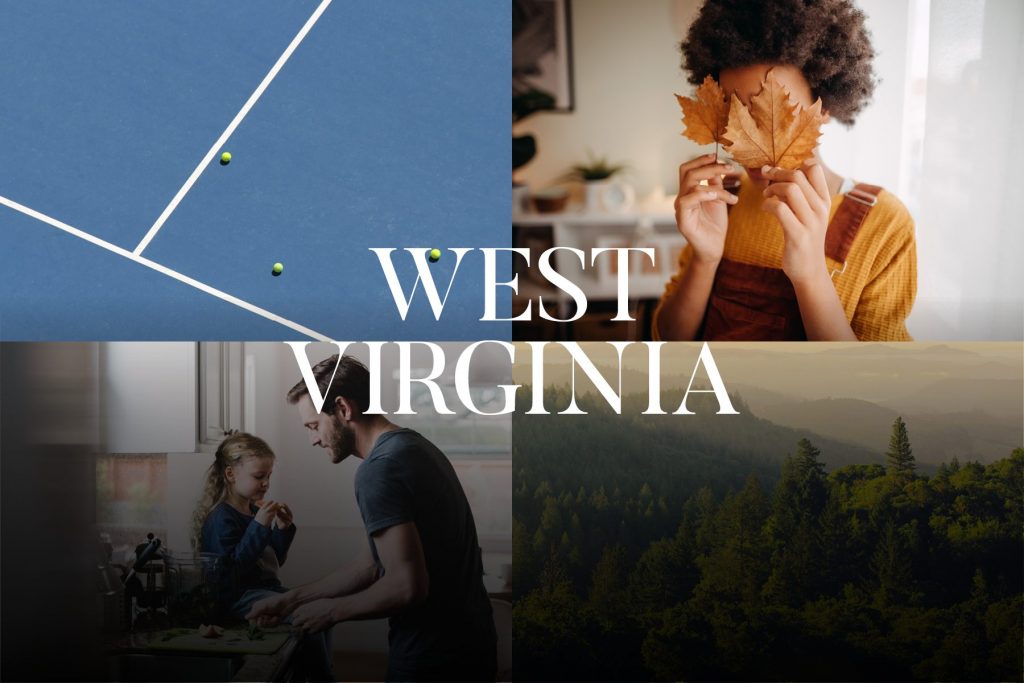
Location, Location, Location. No matter where you live in West Virginia, you can expect plenty of breathtaking nature, a sense of history, generally mild weather, and plenty of opportunities for adventures and excursions. You’ll also find a real, classic sense of community and small-town charm.
West Virginia is bordered by Virginia, Kentucky, Ohio, Pennsylvania, and Maryland, with Washington DC not far away. This makes it a great place to live if you frequently commute to major cities or want to travel.
The state is perhaps best known as the only state completely in the Appalachian region, with the Appalachian Mountains running through it. This includes the Blue Ridge Mountains, the Allegheny Plateau, the Allegheny Mountains and Spruce Knob, the Ridge-and-Valley Appalachians, and more. This makes the Mountain State perfect for nature lovers and mountaineers alike.
Can’t wait? Start your new life in West Virginia today! Browse our selection of New Homes in West Virginia and find the perfect home to start your new adventure.
Martinsburg
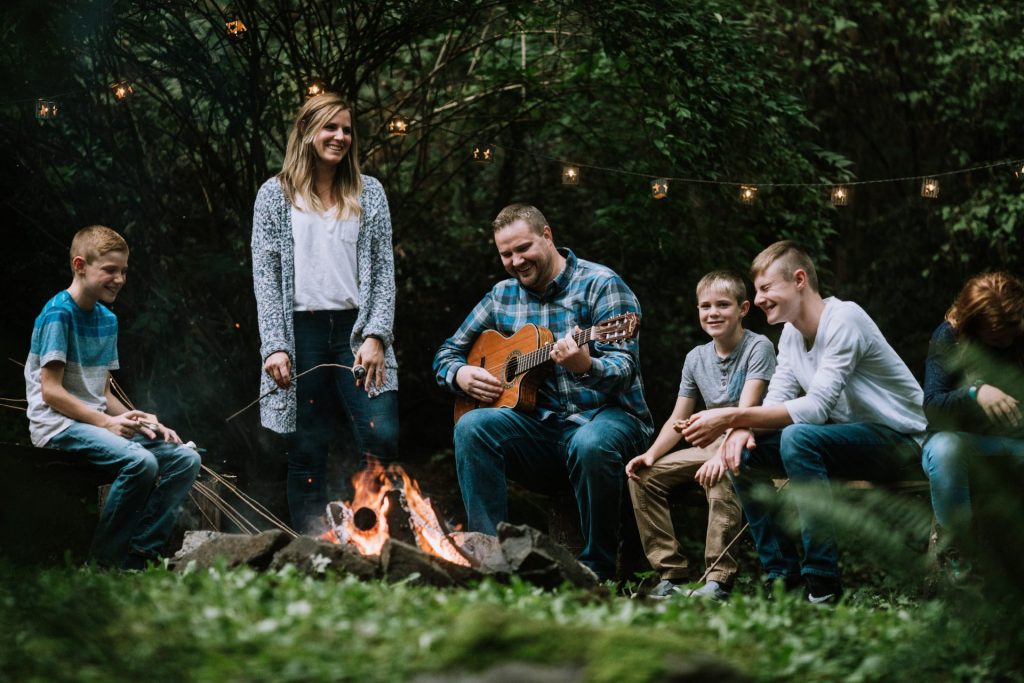
Located less than 80 miles from Washington DC and moments from Western Maryland, Martinsburg is the largest city in West Virginia’s Eastern Panhandle and one of the fastest-growing cities in the state.
With a rich history and abundant opportunities for adventure, there’s something for everyone. Visit the Main Street District, where you can walk by historic buildings, stop by the Farmers Market, and check out festivals, events, and holiday parades. Hike a section of the Tuscarora Trail or head to Poor House Farm Park for playgrounds, various sports courts, fishing, hiking and mountain bike trails, and an event space. Or join in with the real-life treasure hunt–Berkeley County is #1 in the world for geocaching, a type of scavenger hunt that uses technology to lead players through the outdoors to find hidden caches.
Thinking about Martinsburg WV? Check out our selection of New Homes for Sale in Martinsburg WV, or contact us today to learn more about new homes in Martinsburg, West Virginia.
Hedgesville
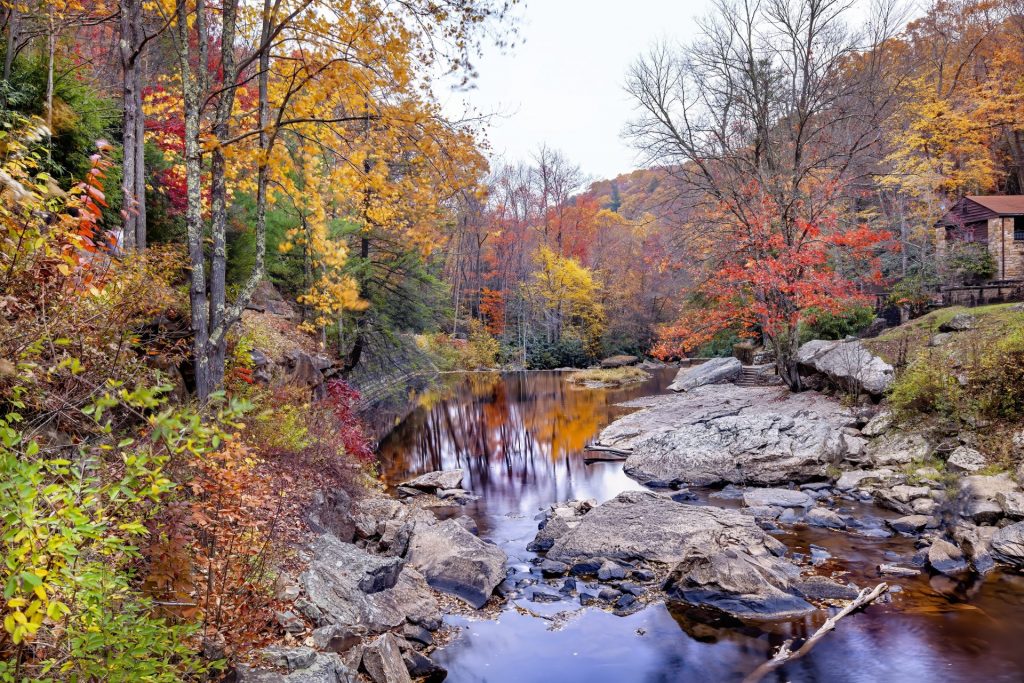
Just 6 miles north of Martinsburg, Hedgesville is a small town with a population of around 300. With a variety of local businesses, Hedgesville is brimming with small-town charm.
The town offers proximity to parks, campgrounds, and the great outdoors, including Sleepy Creek Wildlife Management Area and Stauffer’s Marsh Preserve, where you can explore picturesque forests, a freshwater lake, marshy farmland, and wetland ponds. Whether you’re sightseeing, birdwatching, hiking, or kayaking, Hedgesville is perfect for nature lovers and outdoor adventurers.
Interested in Hedgesville WV? Check out our New Homes in Hedgesville WV or contact us today to learn more about new homes for sale in Hedgesville, West Virginia.
Charles Town
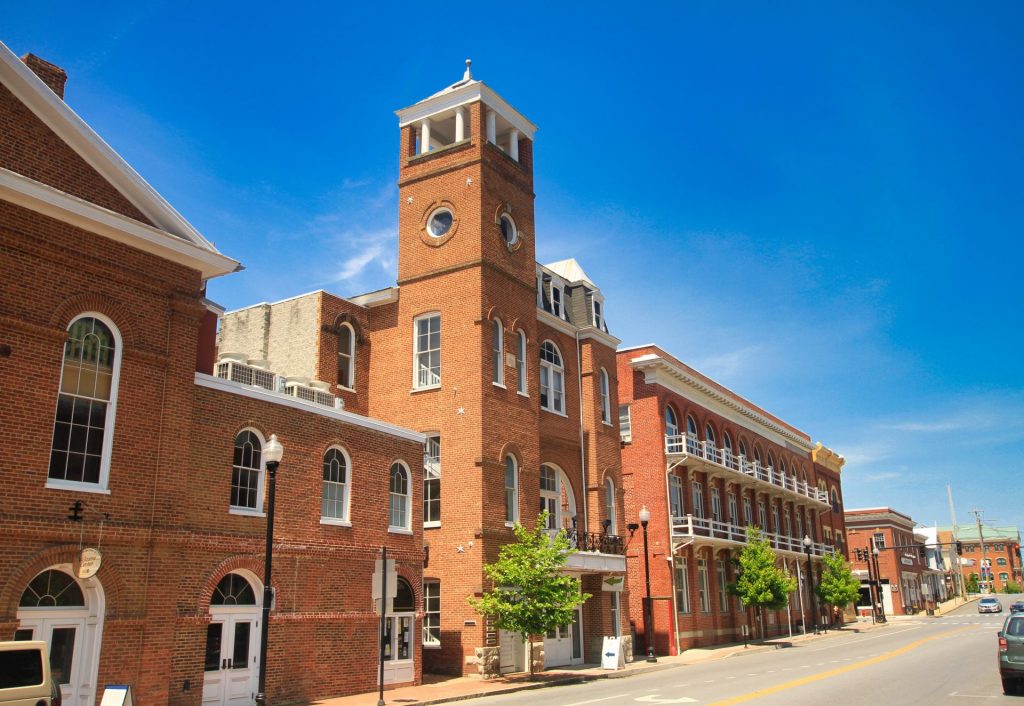
Not to be confused with Charleston, the capital of West Virginia, Charles Town is south of Hedgesville and Martinsburg, roughly 60 miles west of DC. Charles Town is perfect for anyone looking for a blend of stately, tight-knit suburbs with a classic main street and access to outdoor excursions.
This charming city has a downtown featuring historic architecture, including the Old Opera House theater, a museum, and incredible dining, shopping, and recreation. Residents can also test their luck on slots, table games, and horse races at the Hollywood Casino at Charles Town Races. Idyllic suburbs within reach of the city conveniences offer a sense of small-town neighborhood communities. Local parks and nearby outdoor recreation from golf courses to nature preserves offer the perfect breath of fresh air.
Interested in Charles Town WV? Check out our selection of New Homes for Sale in Charles Town WV, or contact us today to learn more about new homes in Charles Town, West Virginia.
Step 2: Choose The Type of New Home You Want to Live In
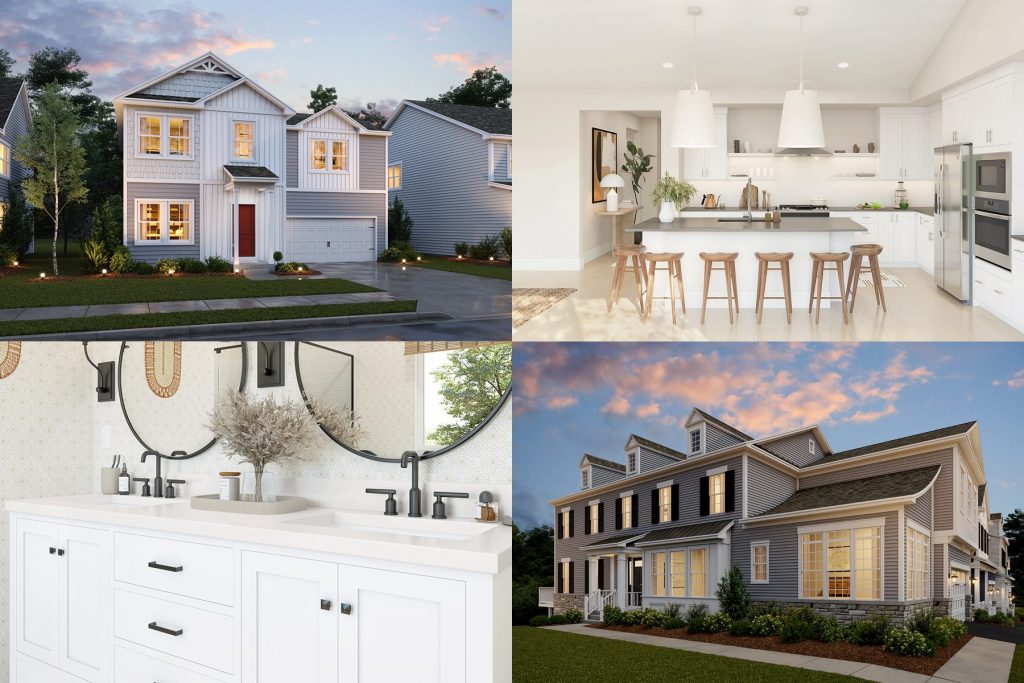
Some benefits of homeownership apply no matter what kind of home you live in. When you own instead of rent, you get the freedom to personalize your home as you wish, and you’ll be building equity over time.
But there are also key differences between different types of homes.
Let’s look at some common options for new construction homes in West Virginia.
Single-Family Homes
When you were a kid and you drew a picture of a house, you probably drew a single-family home–a free-standing square building with a triangular roof. A single-family home doesn’t have to look exactly like that, but it refers to a home that’s a detached structure meant for one family unit or household.
While you may still have next-door neighbors, you won’t share an interior wall with anyone, and will have a certain amount of outdoor space to yourself. This makes a single-family home a great choice for anyone prioritizing privacy and space – whether that means more bedrooms, a backyard, or simply plenty of room to stretch out.
You’ll also have the opportunity for renovation and expansion – though you’ll also be responsible for repairs and maintenance. While single-family homes can cost more than some alternatives, they can also be a savvy financial investment.
Townhomes & Condos
A condo–short for condominium–refers to a building of individually owned apartments. Generally, condos are perfect for first-time homeowners, young professionals, young families, people looking to downsize, and people looking for a more minimalist, low-maintenance lifestyle.
While you may think of condos as cramped spaces with tiny living areas and no more than two bedrooms, this isn’t always the case. True, condos may not offer much extra space or bonus rooms, but you can certainly have enough space to fit everything you need and live comfortably.
In fact, some condos are even larger than single-family homes! (Some of K. Hovnanian’s luxury condos offer 3 bedrooms, 2.5 bathrooms, and a whopping 2,602 square feet, featuring extravagant finishes and a sense of grandeur you might expect would be lost in apartment-style living.)
However, condos mean more neighbors, more shared walls, and potentially less privacy. You’ll likely have one shared main entrance to the building or your section of the building, and then you’ll navigate through a hallway full of entrances to private apartments to get to your door.
If you’d like something halfway between a house and an apartment, a townhome could be for you. These multi-level structures have at least two floors and are attached to other living units by one or both walls.
This means you might have one or two next-door neighbors, but won’t have upstairs or downstairs neighbors. It also means you’ll have just one entrance to go through, and it’ll be a front door directly to your home.
If you enjoy the sense of community that can come from being close to your neighbors, shared amenities like a community pool or park, and a living environment that’s somewhere between urban and suburban, townhomes could be an ideal (and affordable) alternative to a detached home.
Offering more privacy than condos, townhomes are equally suited to first-time homebuyers who’ve outgrown apartment living and older homeowners who might be looking to downsize. The multi-level nature of townhomes, as well as the fact that they typically have a backyard or private outdoor space, can offer more division between spaces, creating the sense of more room, even if the square footage isn’t actually more than that of a condo.
Multi-Generational / Extra Suites
As multigenerational living is on the rise, consider homes with design features like our signature Extra Suite Plus option – a self-contained living space within a larger home that’s somewhere between a guest room and a guest house.
More than just a bedroom, our Extra Suite and Extra Suite Plus designs can include features like private entrances, baths, living areas, and kitchenettes. They’re perfect for households with grandparents, adult children who haven’t completely left the nest, or hosting long-term guests.
These spaces offer privacy and independence without compromising togetherness, convenience, or safety.
Step 3: Choose Which Type of Community is Right for You
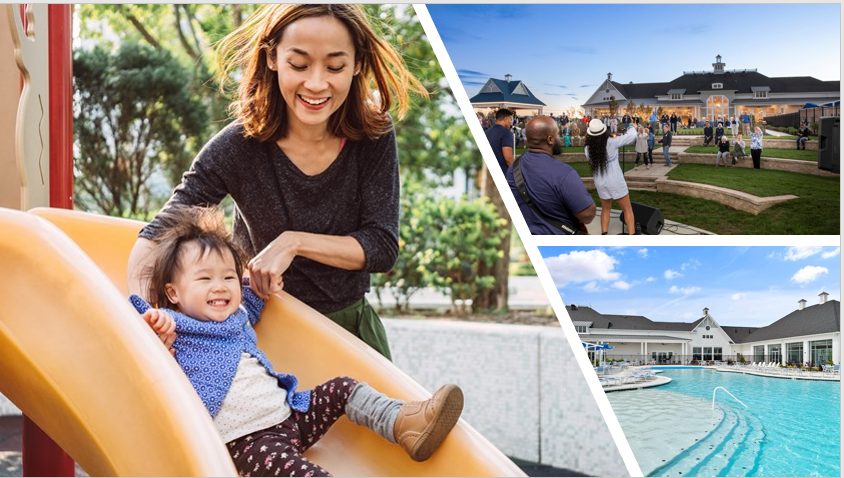
West Virginia is home to a wide variety of new construction home communities, each with its own unique appeal. Whether you’re looking for a family-friendly neighborhood with a pool and playground, a quiet retreat from the city, or a waterfront community with stunning views, you’re sure to find the perfect new construction home community in West Virginia.
Types of West Virginia New Construction Home Communities
Family-friendly neighborhoods: These neighborhoods typically have amenities that appeal to families, such as pools, playgrounds, and walking trails. They are often located in close proximity to schools and other family-friendly activities.
Quiet communities: These communities are typically located in more rural areas and offer a more peaceful and relaxed lifestyle. They may have fewer amenities than family-friendly neighborhoods, but they often offer more privacy and space.
Master-planned communities: Master-planned communities are typically designed with a specific theme in mind, such as a Mediterranean village or a Tuscan villa. They often have a variety of architectural styles to choose from, as well as a wide range of amenities, such as parks, pools, clubhouses, and shopping centers. Master-planned communities are a good option for people who want to live in a community with a lot to offer, but they can also be more expensive than other types of communities.
Golf communities: Golf communities are designed for people who love to golf. They typically have a private golf course, as well as other amenities, such as clubhouses, pools, and tennis courts. Golf communities can be a great option for people who want to live in a community where they can enjoy golfing without having to travel far. However, they can also be more expensive than other types of communities.
Waterfront communities: Waterfront communities are located on lakes, rivers, or the ocean. They offer residents the opportunity to enjoy water sports and activities, such as swimming, boating, and fishing. Waterfront communities can be a great option for people who love the water and who want to live in a community with a relaxed atmosphere. However, they can also be more expensive than other types of communities.
Scatter lot communities: Scatter lot communities offer all the benefits of new construction with more flexibility in location. Instead of being contained to one street or neighborhood, homebuilders develop plots of land in curated locations across a city. This can also mean you won’t have to wait for your neighbors’ homes to be built to feel like your community has begun to take shape–your home may be the newest home on the street!
Gated Community: Gated communities are another option to consider and are exactly what they sound like: any collection of homes which limits access to non-residents through a physical barrier like a gate, wall, or fence. Common benefits include a sense of security, quieter neighborhoods, and reduced through-traffic that makes it safer for kids to play and neighbors to chat. On the other hand, some find gated communities a bit too insular for their liking and prefer visitors to be able to drop by more easily.
Active 55+ Community: Designed for people who are 55 years of age and older, These resort-style communities offer lovely homes with minimal maintenance and a variety of activities. They offer a variety of activities and amenities, such as social clubs, fitness centers, and transportation services.
For example, Active lifestyle communities at K. Hovnanian Homes are designed for 55-year-old and older adults who are ready to enjoy their golden years to the fullest. Whether you’re challenging friends to a match on the sports court, taking a dip in the community pool, exploring the dog park with your canine friend, or enjoying a good meal in the barbecue pavilion, you’ll never run out of things to do in your next, exciting chapter.
HOA or No HOA
An HOA, or Homeowners Association, is a bit like a mini-government for common-interest communities and neighborhoods.
In communities with an HOA, homeowners will likely have to contribute a monthly fee that goes toward things like maintenance.
Like anything else, HOAs have their pluses and minuses. While some homeowners might chafe at regulations on things like exterior decorating, others enjoy the high levels of maintenance that HOA communities often have – as well as amenities, neighborhood events, high property values, conflict resolution, and an overall sense of community.
Step 4: Consider Whether to Build Your New Home or Move In Now
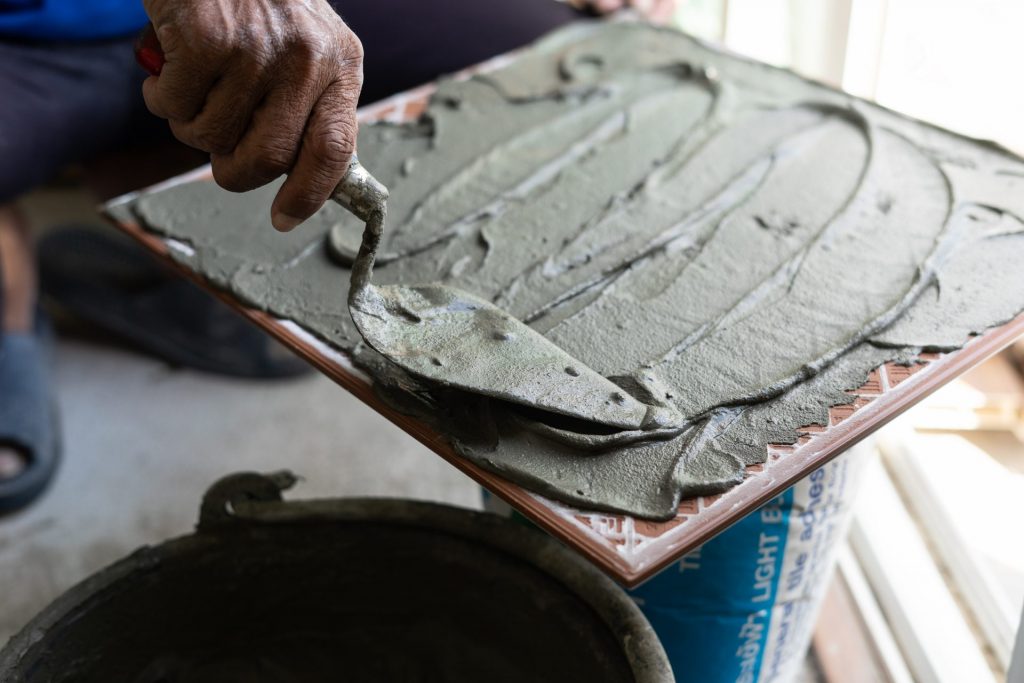
New construction homes all offer some common advantages, like adherence to new building codes, the latest technology, high energy efficiency standards, and more.
However, new construction homes come in different forms, which allow homebuyers to choose if they want something completely personalized, or quick and decision-free.
To-Be-Built Homes
To-be-built homes may look like an empty pile of dirt. That’s because they are new homes that have yet to be built or constructed. It all starts with just a plot of land in a community.
Opting for a to-be-built home gives you the option to watch your dream home be built from the ground up. You can choose your home design pick out structural and non-structural options in advance – like adding an extended patio, switching out a loft for an extra bedroom, or upgrading your flooring.
While the process is longer–as it involves waiting for your home to be built from the ground up–and involves more decisions, it’s a great choice for anyone who wants their new home just as they envisioned it.
Move-in Ready Homes
If you love the idea of simply signing a contract, picking up your key, and wheeling in your suitcase, consider a move-in ready home.
Move-in Ready Homes are completely built and curated by our interior design team – these homes come equipped with beautiful finishes and modern layouts, so that you won’t need to spend time choosing which tiles go with which cabinets.
If you’ve ever toured a model home and wished that you could move in on the spot, a move-in ready home may be a great option.
Spec or Quick Move-In Homes
A happy medium between the two options above would be a new home that’s already been built but still has room for decisions on certain upgrades and options, so that you have more opportunity to fit your home to your needs and personal style.
If you like the idea of a blank canvas, but don’t like the idea of waiting for a new construction home to be built from scratch, consider these brand-new homes that are waiting for you to come and make them your own.
Quick Move-In Homes often have structural options like extra bathrooms, fireplaces, and extra-large patios installed, but they may not have flooring or finishes installed yet, allowing you to choose options that match your style.
Step 5: Finding the Right West Virginia Home Builder

When you’re looking for new construction home builders in West Virginia, there are a lot of options, and it can be hard to know where to start. We might be biased, but we think K. Hovnanian Homes is a great choice if you’re looking for a new home builder in West Virginia.
Here’s some helpful steps to help you find your perfect match:
- Schedule an Appointment or Tour a Model Home – A home builder’s website is a good place to start your search, but it can only tell you so much.
If you find an West Virginia home builder you’re interested in, making an appointment with a Sales Consultant, touring a model home, or both – is an excellent way to get a feel for the team you’d be working with and the home you could be living in.
- Discuss Exterior & Interior Design Options — Whatever type of home you’re interested in, exterior and interior design options are an important factor to consider.
It’s crucial to know what kind of flexibility and choices a builder might offer, and what you can expect in terms of cabinetry, flooring, tiles, exterior elevation, and more.
At K. Hovnanian Homes, we’re proud to offer our innovative “Looks” interior design collections (available at select communities), making great design easy, user-friendly, and transparent. In a simple, streamlined process, we walk you through cohesive aesthetic design styles, such as Farmhouse and Loft style, while leaving plenty of options to personalize your home.
- Check Home Builder Incentives, Lending Options & Special Offers – It’s always smart to check what a home builder can offer in terms of financing, promotions, and discounts.
Some West Virginia home builders may be willing to offer incentives to help make your dream of homeownership a reality.
Step 6: Prepare Your Finances and Finalize Your Mortgage
Buying a new home is a big investment, so it’s important to be prepared and informed. Unless you’re buying your home outright, your mortgage is a crucial part of the process.
Here are some tips on how to prepare your finances and finalize your mortgage:
- Get pre-approved for a mortgage. This will give you an idea of how much you can afford to borrow and will make your offer more attractive to sellers.
- Save for a down payment. The larger your down payment, the lower your monthly payments will be. Larger down payments may also help you qualify for lower interest rates and better incentives.
- Check your credit score. Your credit score will affect the interest rate you’re offered on your mortgage.
- Shop around for a mortgage lender. Compare interest rates and fees from different lenders before you choose one and check for any special offers from your home builder. (Some home builders–like K. Hovnanian’s K. HovnanianⓇ American Mortgage, L.L.C.™–have in-house mortgage lenders.)
- Read the closing disclosure carefully. This document will outline all of the terms of your mortgage, so it’s important to understand what you’re signing.
- Avoid making major purchases, changing your job, or switching banks. Once you decide to start looking for a home, you should put off purchasing a car, buying furniture on credit, starting a new job, or changing banks. All these things will increase your debt-to-income ratio and decrease the amount of stability you’re presenting to your mortgage lender.
Once you’ve found a lender and agreed on the terms of your mortgage, it’s time to finalize the process.
Here are a few additional things to keep in mind:
- Closing costs. In addition to the monthly mortgage payment, you’ll also have to pay closing costs. These costs can vary, but they typically range from 2% to 5% of the purchase price of the home.
- Escrow account. An escrow account is a separate account that holds money for your property taxes and homeowners insurance. The lender will collect money from you each month and deposit it into the escrow account.
- Title insurance. Title insurance protects you in case there are any problems with the title to the property.
While the process may seem overwhelming at first, when buying a K. Hovnanian home, we offer multiple free resources to avoid common stumbling blocks and help you sail through the process. Our in-house mortgage company, K. Hovnanian® American Mortgage, L.L.C.™(KHAM), also offers a variety of loan programs to work with your budget and needs. Reach out to a KHAM representative today to learn more.
Step 7: Get Ready for Your New Home in West Virginia

After you’ve gotten through our first six steps, you have a new home!
Despite being exciting, the full moving process can be stressful. From decluttering, packing, planning, furniture, and design choices to your actual move-in day, moving is undeniably complex. There are a lot of things to do to get ready, but by starting early and planning ahead, you can make the process go smoothly.
Here are some tips on getting ready to move into your new construction home:
- Start packing early. This will give you time to evaluate what you do and do not want to keep, pack your belongings carefully, and avoid last-minute stress.
- Create a moving checklist. This will help you keep track of everything that needs to be done before, during, and after the move. Plus, being able to check off a task always feels rewarding, and moving is a great time to celebrate the little accomplishments.
- Set up utilities and connectivity. Make sure that all your utilities–electricity, gas, water, internet, and phone service–are all set up and ready to go on your move-in date.
- Take safety precautions for children and pets. Make sure that your new home is safe for your children and pets, so they can play and explore with no worries or accidents.
- Unpack your belongings slowly and carefully. Take your time and enjoy the process of getting settled into your new home. Some things you owned in your previous home may not look or feel right in your new space. Don’t be afraid to donate, sell, or dispose of items you no longer want to keep.
Here are some additional tips:
- Label your boxes clearly. This will make it easy to find what you need when you’re unpacking. Don’t just stop at what room the box goes in, make a list of each category of item that’s inside. If there’s something specific in a box you know you’ll want to access or maybe is the odd item out, adding the name of that item to the box will help you locate it easily.
- Pack a “first night” box. This should include everything you need for your first night in your new home, such as toiletries, food, bedding, and a change of clothes.
- Don’t forget the small stuff. Don’t forget to pack things like light bulbs, batteries, cleaning supplies, hand soap, toilet paper, and other essentials.
- Ask for help. If you have friends or family who are willing to help you move, don’t be afraid to ask for their assistance.
Moving into a new construction home in West Virginia can be a lot of work, but it’s also an exciting time. By following these tips, you can make the process go smoothly and enjoy your new home in no time.
So, are you ready to start your new life in West Virginia? Visit K. Hovnanian Homes and browse our selection of new construction homes in West Virginia today and find the perfect home for you. With a wide variety of styles and floor plans to choose from, we’re sure you’ll find the perfect home for your needs and budget. And with our convenient location and amenities, you’ll be able to enjoy all that West Virginia has to offer.
Last Updated on January 9, 2024
